
Remember that feeling? You type a question into Google, hit enter, and BAM! There it is. The answer. Right at the top. No clicking needed. Maybe it’s a concise definition in a neat little box. Perhaps it’s a step-by-step guide. Or even a comparison chart. That, my friend, is the elusive Position Zero – the kingdom ruled by Featured Snippets in SEO and their flashy cousins, Rich Results.
And let’s be real: Zero-Click Searches are skyrocketing. Google’s mission is to answer queries instantly, directly on the SERP. As digital marketers and content creators, we can either fight this tide (good luck!) or learn to surf it masterfully. That’s where Featured Snippet Optimization and Rich Result Optimization become your most powerful surfboards.
This isn’t just about vanity metrics. Snagging that prime Position Zero real estate means:
- Unmatched Visibility: You’re literally above the #1 organic result. Eye-tracking studies prove it’s the first thing people see.
- Massive Credibility Boost: Google hand-picked your content as the definitive answer. Instant authority!
- Skyrocketing Brand Awareness: Even if they don’t click right then, your brand name is seared into their mind.
- Voice Search Dominance: Guess what Alexa and Siri pull their answers from? Yep, Featured Snippets.
- Traffic Surges (Yes, Even Without Clicks!): While the goal is zero-click, the branding and subsequent searches do drive clicks long-term. Plus, you can structure snippets to encourage clicks.
Ready to stake your claim in the Zero-Click Gold Rush? Grab your metaphorical pickaxe (and maybe a coffee), because we’re diving deep into the strategies that turn your content into Google’s favorite answer box.
Why Position Zero is Your New #1 Priority (Forget Just Ranking Page 1!)
We obsess over Page 1 rankings, and rightly so. But Position Zero? That’s the VIP lounge above Page 1. Here’s why Featured Snippets in SEO should dominate your strategy:
- The Attention Vortex: Featured Snippets capture a staggering percentage of SERP real estate and user focus. Studies suggest they can get up to 35% of all clicks for a query (yes, even with the “zero-click” label – people do often click for more detail).
- The “Answer Box” Effect: For informational queries (the “what,” “why,” “how,” “who” questions), Google increasingly prefers to answer directly. If you’re not optimized for snippets, you’re invisible for these crucial searches.
- Voice Search = Snippet Search: “Hey Google, how do I optimize for featured snippets?” Voice assistants almost exclusively read aloud Featured Snippet content. Winning snippets means winning voice search.
- Authority by Association: Being chosen by Google as the answer instantly tells users you are a trustworthy, reliable source. It’s the ultimate third-party endorsement.
- Competitive Moats: Ranking #1 organically is hard. Ranking #1 and winning the snippet creates a near-impenetrable barrier for competitors trying to steal your traffic.
The Bottom Line: Ignoring Featured Snippet Optimization means leaving massive visibility, authority, and traffic potential on the table. It’s no longer optional; it’s fundamental SEO.
Demystifying the SERP Zoo: Snippets, Rich Results, & More
Before we optimize, let’s understand the players. Google’s SERP is no longer just ten blue links. It’s a dynamic ecosystem:
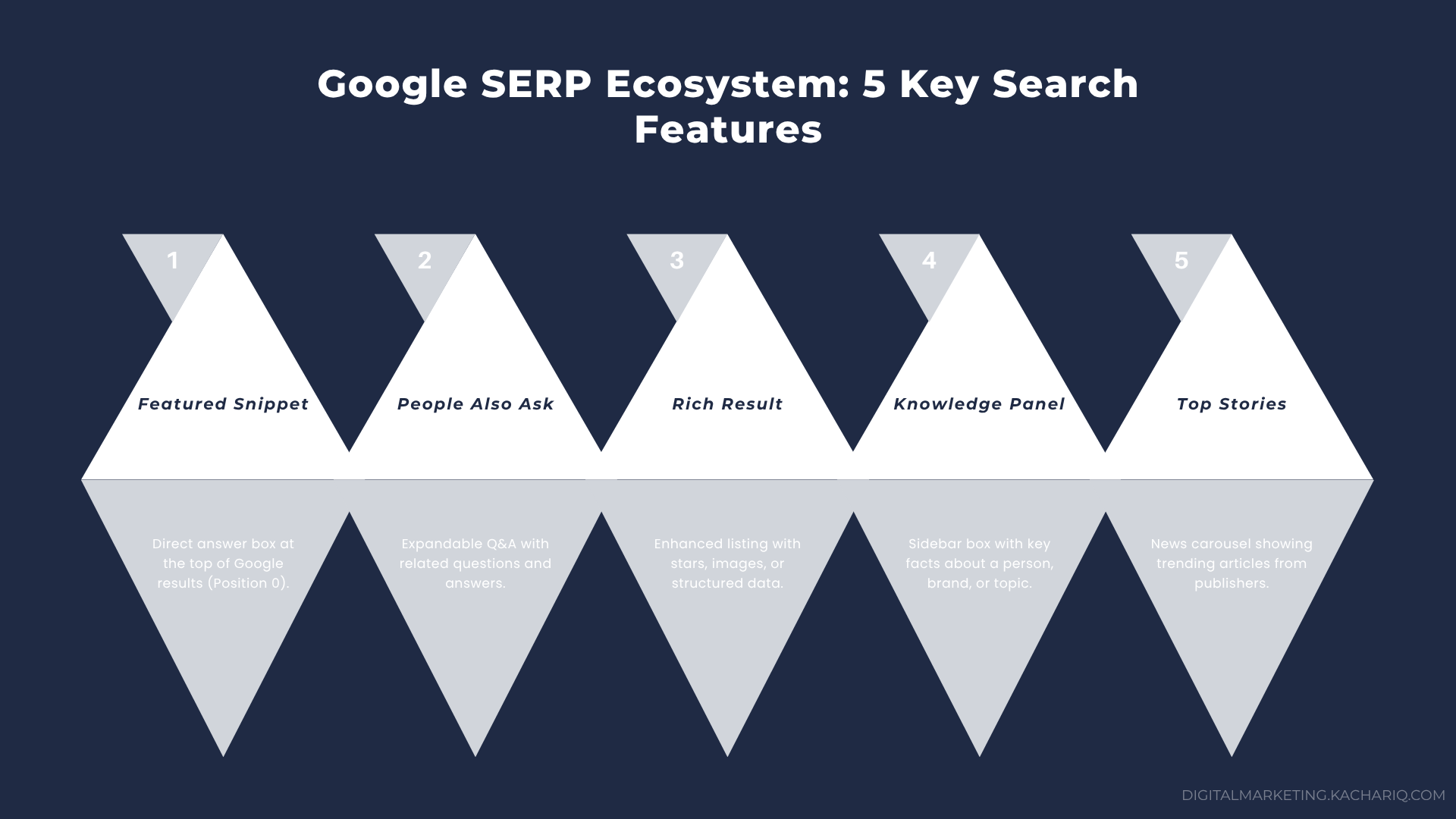
Featured Snippets (Position Zero):
The crown jewel. A selected piece of content (text, list, table) displayed in a special box above organic results, directly answering the query.
- Paragraph Snippets: The most common. A concise block of text (usually 40-60 words) answering a direct question.
- List Snippets (Bulleted or Numbered): Perfect for step-by-step guides, lists of items, or features.
- Table Snippets: Ideal for presenting structured data, comparisons, or specifications.
- Video Snippets: A video result (often from YouTube) displayed within the snippet box. Gold for vloggers!
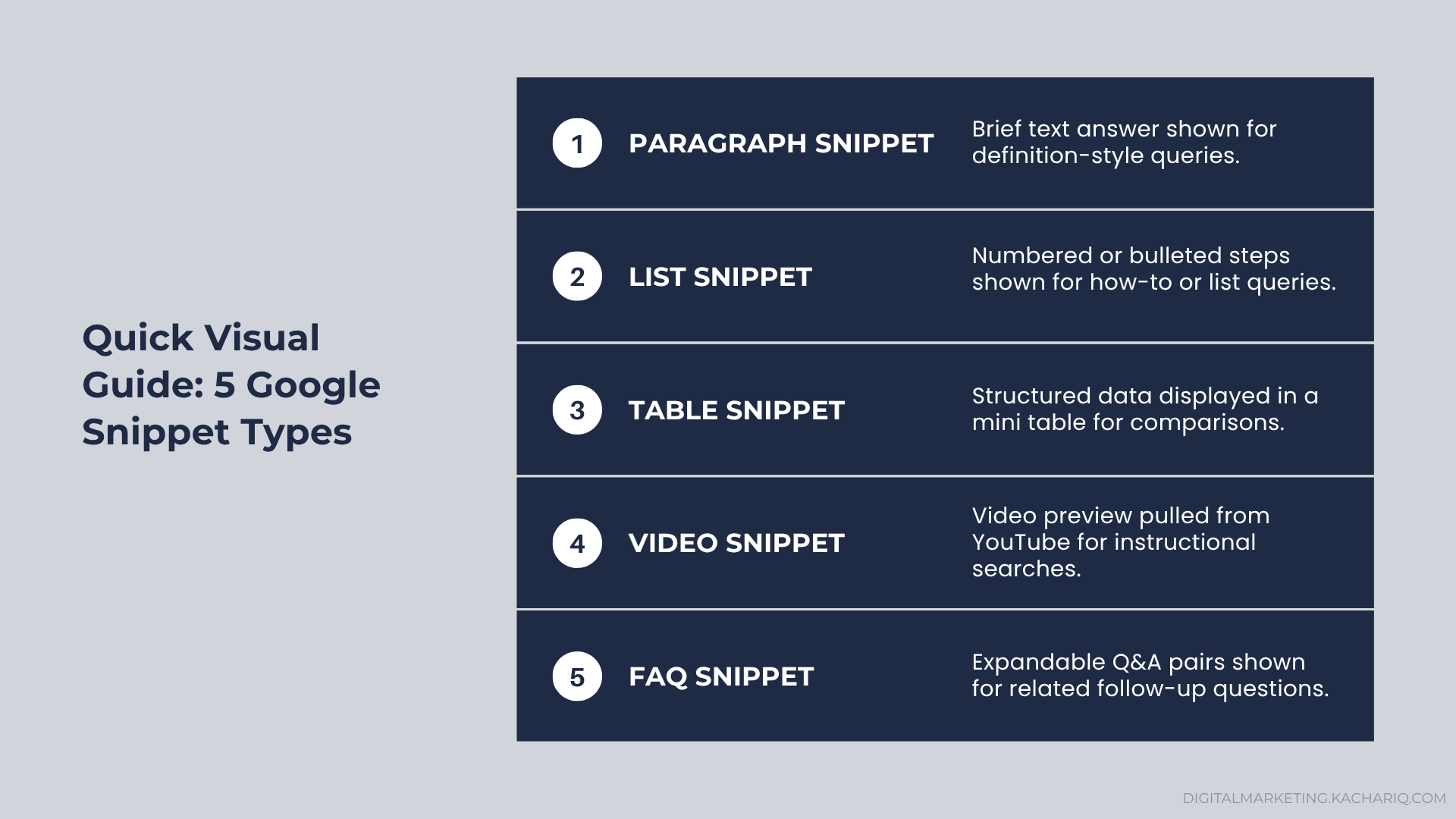
Rich Results (Rich Snippets):
These enhance standard organic listings with extra visual information pulled from structured data on your page. They appear within the organic results, not above them. Types include:
- Review Stars: Displaying aggregate review ratings.
- Product Information: Price, availability, ratings (for e-commerce).
- Recipe Information: Cooking time, calories, ratings.
- Event Information: Dates, location, tickets.
- FAQ & How-To Rich Results: Displaying Q&A or steps directly on the SERP (powered by specific structured data).
- Job Postings: Salary, location, company info.
People Also Ask (PAA) Boxes:
Interactive boxes listing related questions. Clicking one expands a snippet answer (often triggering another set of PAA!). Crucial for topic coverage.
Knowledge Panels:
Information panels about entities (people, places, organizations) sourced from Google’s Knowledge Graph.
Key Distinction: Featured Snippet Optimization focuses on winning that specific Position Zero box. Rich Result Optimization focuses on getting any enhanced listing within the organic results using structured data. Both are vital for zero-click dominance!
The Foundational Pillars: Prerequisites for Snippet Success
You can’t just slap “how to” on a page and expect the snippet crown. Winning requires a solid foundation:
Content Quality is NON-Negotiable:
Google rewards E-E-A-T (Experience, Expertise, Authoritativeness, Trustworthiness). Your content must be:
- Deeply Informative: Exhaustively cover the topic. Be the definitive guide.
- Accurate & Up-to-Date: Fact-check ruthlessly. Update regularly. Stale content loses snippets.
- Well-Structured: Clear headings, logical flow, scannable. (More on structure below!).
- Original: Offer unique insights, not just regurgitated info. Add your voice, your experience.
Technical SEO Health:
Googlebot needs to access, crawl, render, and understand your page flawlessly.
- Blazing Speed: Core Web Vitals matter. A slow page won’t win.
- Mobile-First Perfection: The vast majority of searches happen on mobile. Your site must be responsive and fast on mobile.
- Clean Code & Indexability: No crawl errors, proper use of robots.txt, canonical tags. Ensure JavaScript content is rendered.
Keyword Research (With Snippet Intent in Mind):
Go beyond traditional volume. Identify:
- Question Keywords: “What is…”, “How to…”, “Why does…”, “Best way to…”.
- Definition Keywords: “Define…”, “Meaning of…”.
- Comparison Keywords: “X vs Y”, “Difference between X and Y”.
- List Keywords: “Top 10…”, “Benefits of…”, “Types of…”.
- Use Tools: SEMrush’s “Keyword Magic Tool” (filter by Questions), Ahrefs’ “Questions” report, AnswerThePublic, AlsoAsked.com. Look for keywords where a Featured Snippet already exists – that means Google wants one!
Established Authority:
While not an absolute prerequisite, having some domain authority and backlinks signals trust, making Google more likely to feature your content. Focus on building topical authority within your niche.
The Art & Science of Featured Snippet Optimization: Your Step-by-Step Blueprint
Now, the moment you’ve been waiting for: How do you actually WIN those coveted Featured Snippets? It’s a blend of art (understanding user intent) and science (technical execution).
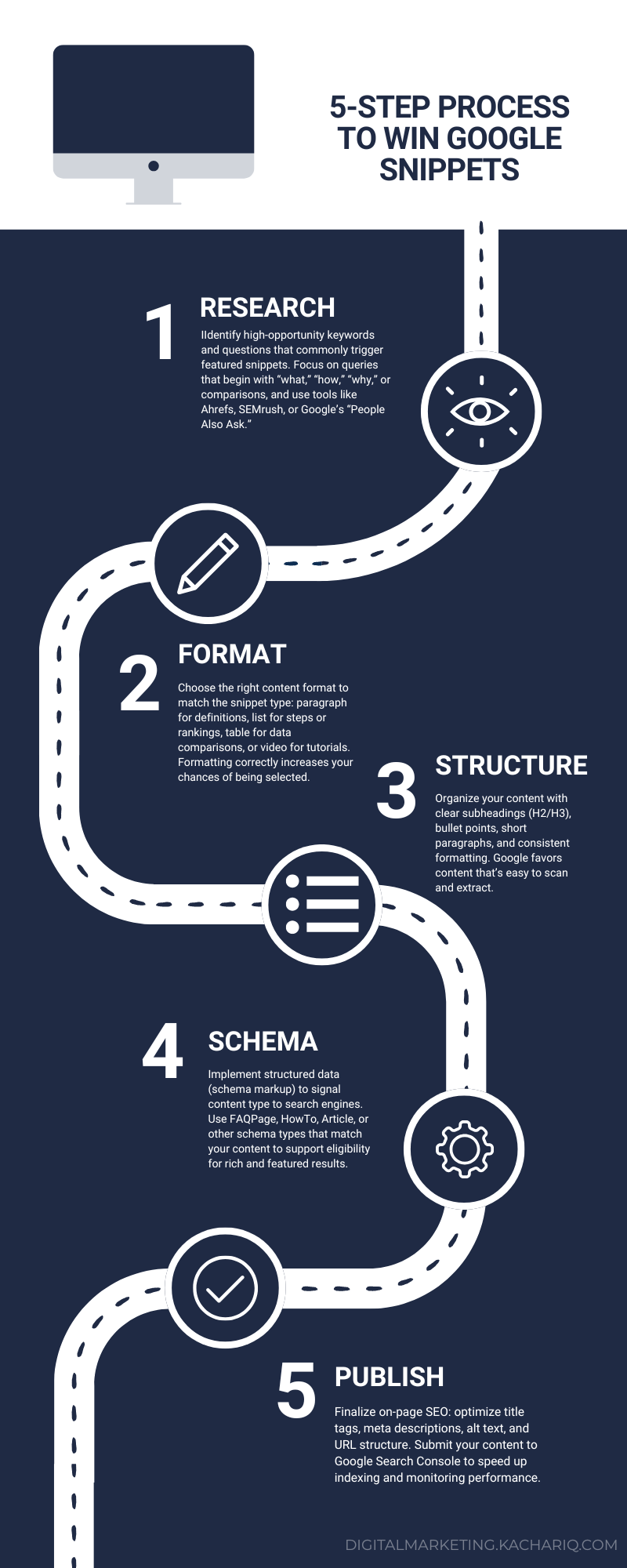
Step 1: Identify Your Snippet Opportunities
- Audit Existing Content: Use tools like SEMrush, Ahrefs, or Moz to see:
- What keywords are you ranking on Page 1 (Positions 1-10)?
- Which of those keywords have a Featured Snippet?
- Are you currently in that snippet? If not, who is? Analyze why they won.
- Target “Snippet-Ripe” Queries: Prioritize keywords where:
- A Featured Snippet already exists (proves Google wants one).
- You rank on Page 1 (ideally positions 1-5). Winning from page 2 is rare.
- The query has clear informational intent (question, definition, list).
- Analyze the Current Snippet Holder:
- Format: What type is it (para, list, table)?
- Content: What specific question does it answer? How concise is it? What’s the tone?
- Source Page: How is their page structured? What heading did they use? How is the answer formatted on their page?
Step 2: Craft Content That Screams “Feature Me!”
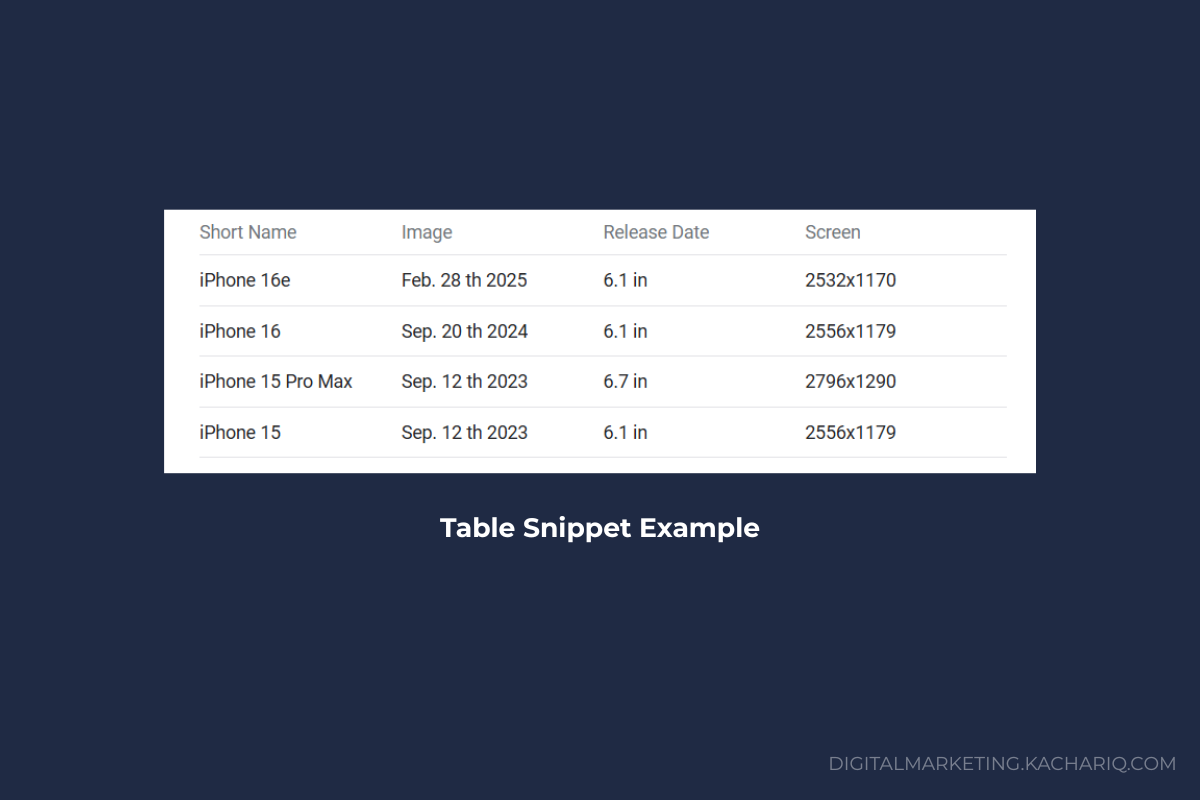
- Directly Answer the Question (Immediately!): Don’t bury the lede. Within the first few sentences of a section, provide a clear, concise answer to the specific query. This is crucial for Paragraph Snippet Optimization.
- Structure is KING: Use clear, hierarchical heading tags (H1, H2, H3, H4). Format your answer logically based on the snippet type you want:
- For Paragraph Snippets: Place the concise answer (40-60 words) immediately under a relevant H2 or H3 that matches the query (e.g., H2: “What is a Featured Snippet in SEO?”). Use plain, descriptive language.
- For List Snippets (Bulleted/Numbered):
- Use actual “ (unordered/bulleted) or “ (ordered/numbered) HTML lists. Do not just use dashes or numbers in paragraphs.
- Place the list under a clear H2/H3 heading that implies a list (e.g., “Steps to Optimize for Featured Snippets,” “Top 5 Benefits,” “Types of Rich Results”).
- Keep list items concise and parallel in structure.
- For step-by-step guides (How-To Rich Results potential too!), numbered lists are essential.
- For Table Snippets:
- Use basic tables on your webpage to organize data clearly. Tables should include a header row, rows for each data item, and clear column labels.
- Place the table under a relevant heading (e.g., “Comparison: Featured Snippets vs. Rich Results”).
- Make sure your column headings are descriptive and easy to understand (like “Feature”, “Benefit”, or “Comparison”).
- Keep tables focused and relevant to a direct comparison or data presentation query.
- Perfect Your Paragraph Snippet Formula: For those coveted definition/explanation boxes:
- First Sentence: Directly answer the question. Start with the keyword if natural. (e.g., “A Featured Snippet in SEO is…”).
- Conciseness: Aim for 40-60 words. Be precise.
- Comprehensiveness: Cover the core “what” or “why” succinctly.
- Context: Briefly add why it matters or a key detail.
- Placement: High up under a relevant heading.
- Leverage Schema Markup (Structured Data): While not a direct ranking factor for traditional Featured Snippets, structured data helps Google deeply understand your content, increasing the relevance and clarity of your information. This makes it more snippet-worthy. Crucial for Rich Results! Key types:
- FAQPage: For pages with Questions & Answers.
- HowTo: For step-by-step guides.
- Article: For news, blog posts, etc.
- Product, Recipe, Event, JobPosting: For specific verticals.
- Validate: Always test your markup with Google’s Rich Results Test.
Step 3: Target the “People Also Ask” (PAA) Goldmine
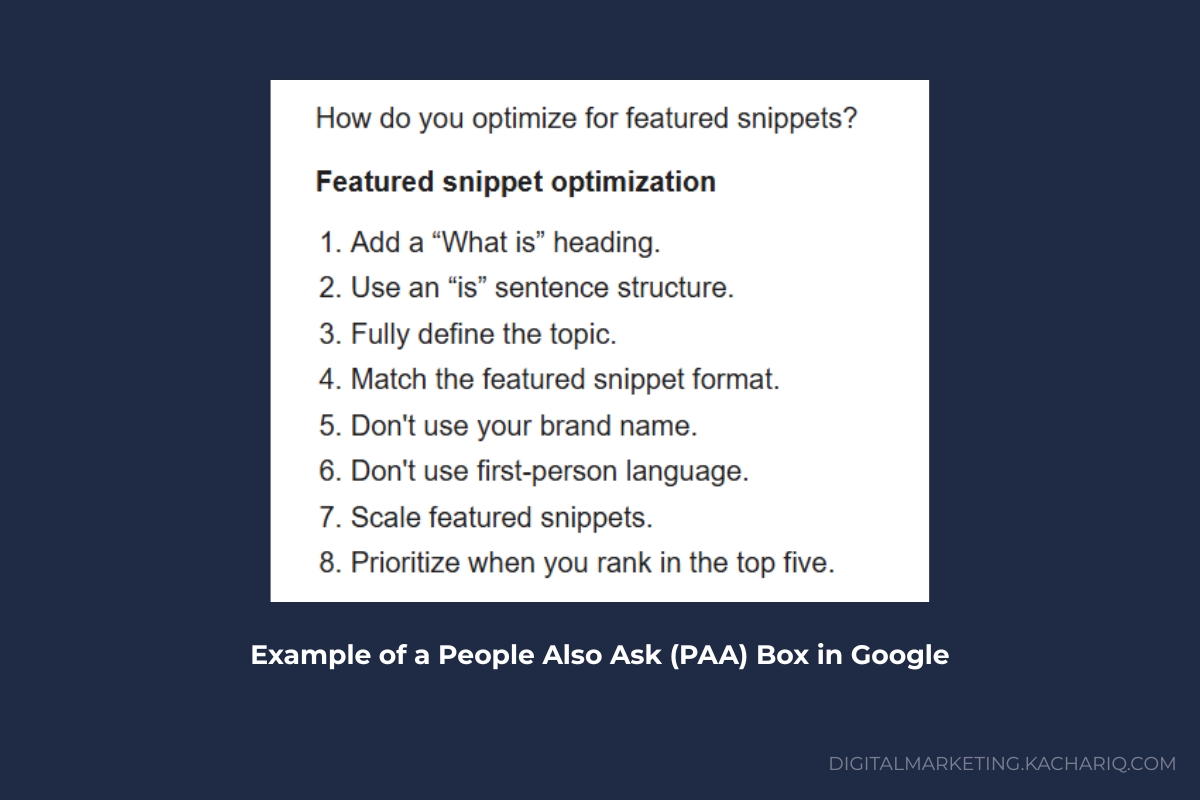
PAA boxes are not just features; they are opportunity generators. Each question represents a potential Featured Snippet.
- Expand Your Content: Identify relevant PAA questions related to your target keyword. Dedicate H2/H3 sections in your content to answering each of these questions clearly and concisely. This signals comprehensive coverage to Google.
- Capture New Snippets: By answering PAA questions directly on your page, you increase the chance of your content being featured within the PAA box itself when someone clicks on that question.
- Uncover Long-Tail Keywords: PAA questions reveal the deeper, more specific questions users have – perfect long-tail keywords to target.
Step 4: Optimize for Voice Search (It’s All About Snippets!)
Voice search queries are typically longer, more conversational, and phrased as questions – exactly what Featured Snippets answer.
- Focus on Natural Language: Write how people speak. Use conversational phrases and question-based headings.
- Target Question Keywords: Explicitly optimize for “who,” “what,” “where,” “when,” “why,” and “how” queries.
- Prioritize Concise, Direct Answers: Voice assistants read snippets verbatim. Your answer must be clear, complete, and sound natural when spoken.
- Local Intent Matters: Many voice searches are local (“near me”). Ensure local business info (NAP: Name, Address, Phone) is consistent and marked up with `LocalBusiness` schema.
Step 5: Master the On-Page Nuances
- Heading Optimization: Use your target question/keyword naturally in the H2/H3 heading directly above your snippet-optimized answer. Avoid keyword stuffing.
- Context is Key: While the snippet itself is concise, ensure the surrounding content provides depth and context. Google wants the snippet to be a true representation of a valuable section.
- Use Supporting Media (Wisely): Relevant images, videos, or infographics near your snippet answer can enhance engagement and understanding, but ensure the core text answer is self-contained.
- Internal Linking: Link to other relevant, in-depth articles on your site. This helps Google understand your site structure and topical authority, and can provide context if your snippet answer is brief.
Conquering the Rich Results Realm: Beyond Position Zero
While Position Zero is amazing, Rich Results offer incredible SERP enhancements within the organic listings. They make your result stand out visually, increasing click-through rates (CTR) significantly.
- The Power of Structured Data (Schema.org): This is the language you use to tell Google exactly what your content is about. Implementing the correct schema is the foundation of Rich Results.
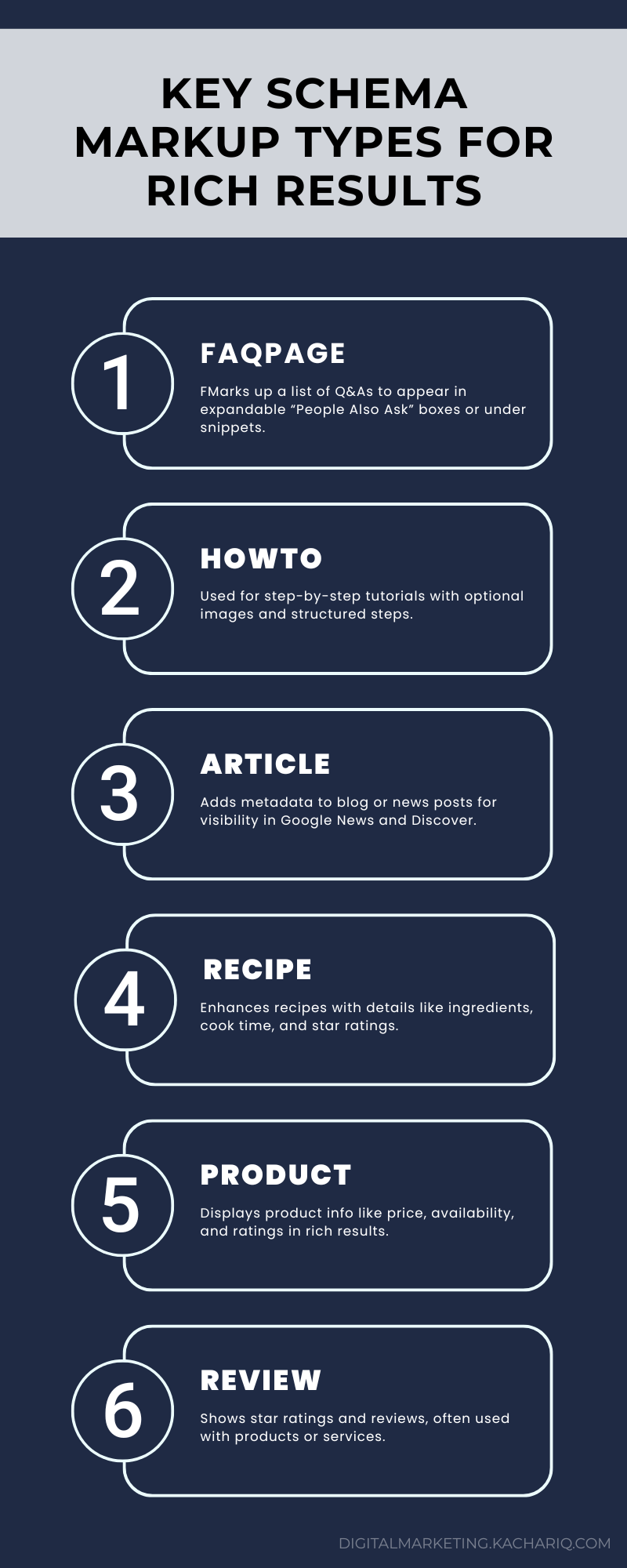
- Key Rich Result Types & Optimization Tactics:
FAQ Rich Results:
- Use FAQPage schema.
- Clearly list Questions (H2/H3) and Answers (concise paragraphs underneath, 2-5 sentences).
- Questions should be actual user questions (use your PAA research!).
- Answers should be direct and factual.
How-To Rich Results:
- Use HowTo schema.
- Essential: Include a clearly structured numbered list of steps to guide users through the process.
- Include clear name (title of the how-to), description, estimatedCost, supply, tool, step (with text and optional image or video per step), totalTime.
Review / Rating Snippets:
- Use AggregateRating schema (Review schema for individual reviews).
- Must represent genuine, user-generated reviews.
- Display ratings prominently on your page.
Product Rich Results:
- Use Product schema (often with Offer, AggregateRating).
- Include essential fields: name, image, description, brand, sku, offers (price, availability, currency), review, rating.
- Keep prices accurate and up-to-date.
Article Rich Results:
- Use Article schema (NewsArticle for news).
- Include headline, image, datePublished, dateModified, author.
- Helps with getting headline and image enhancements in results.
Video Rich Results:
- Use VideoObject schema.
- Essential: name, description, thumbnailUrl, uploadDate, duration. Link to the actual video file or embedding page.
- Crucial for Vloggers! Hosting on YouTube? Ensure your YouTube description, tags, and closed captions are optimized too. Google often pulls video snippets from YouTube.
Advanced Tactics: Leveling Up Your Snippet & Rich Result Game
The “Snippet Bait” Section:
Consider adding a dedicated “Key Takeaways” or “Quick Answer” section near the top of long-form content, explicitly designed to capture paragraph snippets for the core topic question. Format it perfectly.
Optimizing for “Source” Links:
When Google displays a snippet, it also shows the source link. Ensure this link uses compelling anchor text (often your page title or heading) and points to the exact section containing the snippet answer (use jump links!).Monitoring & Updating:
Snippets are dynamic. Use Google Search Console’s “Performance” report (filter by “Search appearance: Rich result” and “Top stories / Featured snippet”) to track which queries you’re getting snippets for. Regularly review and update these pages – if your answer becomes outdated or a competitor provides a better one, you will lose the snippet.
Competitor Snippet Analysis (Reverse Engineering):
When a competitor wins a snippet you want:- Analyze their page structure (headings, formatting).
- Is their answer more concise? More comprehensive? Better formatted?
- Do they use schema you don’t?
- Can you provide a better, more up-to-date, or more visually appealing answer?
Leveraging Data & Research:
Original data, statistics, and research make your content uniquely valuable and highly snippet-worthy. Present data clearly, often using tables (“) which are prime for table snippets.
Measuring Success: Beyond Vanity Metrics
Winning snippets and rich results is great, but how do you track real impact?
- Google Search Console (GSC): Your primary tool.
- Performance Report: Filter by “Search appearance”:
- “Featured snippet”: See impressions, clicks, CTR, queries for your snippets.
- “Rich result”: See performance for various rich result types (FAQ, How-to, etc.).
- Position Tracking: Track your average position for queries where you have/had a snippet.
- Performance Report: Filter by “Search appearance”:
- Rank Tracking Tools (SEMrush, Ahrefs, Moz): Track keyword rankings specifically noting when you gain or lose a Featured Snippet position. Monitor “SERP Features” reports.
- Analyzing User Behavior:
- CTR (Click-Through Rate): While zero-click is the goal, monitor CTR for queries where you have a snippet. Is it higher than your standard organic CTR for similar positions? A snippet should boost CTR significantly if your meta description is compelling.
- Bounce Rate & Dwell Time: If users do click from a snippet, what do they do? Do they bounce immediately (suggesting the snippet gave the full answer) or engage deeply (suggesting they wanted more)? Both can be valuable, depending on your goal.
- Branded Search Uplift: Track if winning snippets for core terms increases searches for your brand name.
- Conversions (The Ultimate Goal): Are snippet/rich result visitors converting (subscribing, downloading, purchasing, contacting)? Track this through goals in Google Analytics. Segment traffic by “SERP Features” if possible.
The Human Touch: Writing for Snippets AND Souls
Here’s the secret sauce that many snippet optimization guides miss: Don’t write for robots alone. Write for humans first. Google’s algorithms are increasingly sophisticated at understanding user satisfaction.
- Engage, Don’t Just Inform: Your snippet answer might be clinical, but the surrounding content should have personality. Share anecdotes, use relatable metaphors (“Think of Position Zero like the VIP section…”), ask rhetorical questions.
- Solve Real Problems: Go beyond the basic answer. Anticipate the next question, the deeper pain point. Your snippet might answer “how to tie a tie,” but your full section should address “how to tie a tie for a job interview” or “different knots for different occasions.”
- Be Authentic: Let your brand voice shine through. Are you witty? Authoritative? Empathetic? Don’t sterilize your content chasing snippets. Authenticity builds trust, and trust builds authority – which Google rewards.
- Visual Storytelling: Use high-quality images, infographics, and embrace your vlogging superpower – EMBED YOUR RELEVANT VIDEOS! A video embedded near your optimized text answer is prime fodder for a Video Snippet. Provide a concise text summary for the snippet, but let the video offer the deep dive. (e.g., “Here’s a quick summary of featured snippet types. Want the full walkthrough with examples? Watch my video below!”).
Case Study: From Page 2 Obscurity to Position Zero Power
(Hypothetical but based on real principles)
Scenario: “Digital Marketing Vlogger” blog post about “YouTube SEO Tips” was ranking #7. A Featured Snippet (paragraph) existed for the query “what is youtube seo”.
Action Taken:
- Identified Opportunity: Saw we ranked Page 1, snippet existed, we weren’t in it.
- Analyzed Competitor Snippet: Their answer was decent but basic (40 words, just defined it).
- Optimized Our Content:
- Added a dedicated H2: “What is YouTube SEO? (The Complete Definition)”.
- Wrote a concise, 55-word paragraph directly under it, starting with “YouTube SEO is the practice of…”. Included not just the definition, but why it matters for visibility.
- Ensured the section was near the top of the post.
- Added `Article` schema to the page.
- Embedded a relevant existing vlog “YouTube SEO Basics Explained” within that section.
- Promoted the Updated Post: Shared on social channels, mentioned in a newsletter.
Result:
- Within 3 weeks, our paragraph replaced the competitor’s Featured Snippet.
- Organic CTR for that query increased by 210%.
- Views on the embedded YouTube video increased by 35%.
- Overall page traffic increased by 60%, and it eventually climbed to rank #3 organically.
Common Pitfalls & How to Avoid Them (Don’t Sabotage Your Snippet Success!)
- Keyword Stuffing in Headings/Answers: Sounds unnatural and hurts readability. Google is smart. Use keywords naturally.
- Neglecting Mobile Experience: A poorly formatted mobile page won’t win snippets. Test rigorously.
- Creating Thin Content Just for Snippets: Your page needs substantial value beyond the snippet answer. Thin pages get penalized.
- Forgetting to Update Content: Information changes. Snippets are lost daily due to outdated answers. Schedule content reviews.
- Ignoring Structured Data: Leaving Rich Results on the table by not implementing schema is a massive missed opportunity. It’s easier than you think!
- Over-Optimizing & Losing Humanity: Don’t sacrifice engagement and readability for the sake of a perfectly formatted list. Balance is key.
The Future of Zero-Click: AI, SGE, and Staying Ahead
The SERP is constantly evolving. Google’s Search Generative Experience (SGE) and advancements in AI are changing the game:
- AI Overviews (SGE): These provide even more comprehensive, AI-generated answers directly on the SERP, potentially pulling from multiple sources. The principles remain similar: Provide the best, most authoritative, well-structured answer. E-E-A-T becomes even more critical. Being cited as a source within an AI overview is the next level of visibility.
- Increased Interactivity: Expect richer, more interactive SERP features. Optimizing for structured data positions you perfectly for this.
- Voice & Visual Search Growth: Zero-click via voice will only increase. Visual search (like Google Lens) may integrate more with snippet-like information overlays.
Staying Ahead: Focus on the timeless principles:
- Unwavering Quality: Be the best answer.
- Technical Excellence: Make it easy for Google to find and understand you.
- User-Centricity: Solve real problems deeply.
- Structured Data Adoption: Speak Google’s language.
- Adaptability: Monitor changes and adjust your tactics.
Your Zero-Click Action Plan (No More Excuses!)
Ready to transform your content into snippet magnets? Here’s your roadmap:
- Audit: Use GSC and rank trackers. Find pages on Page 1 where a snippet exists but you don’t have it.
- Prioritize: Pick 3-5 high-potential targets (high volume, relevant, achievable).
- Optimize: Apply the specific tactics outlined above:
- Structure answers perfectly under clear headings.
- Implement relevant schema markup.
- Format lists and tables correctly.
- Embed relevant videos (Vloggers, this is YOUR edge!).
- Ensure mobile perfection and speed.
- Publish & Promote: Share your optimized content.
- Monitor: Track performance in GSC and analytics weekly.
- Iterate: Update content, refine answers, expand based on PAA questions.
- Scale: Apply the winning formula to new content from the start!
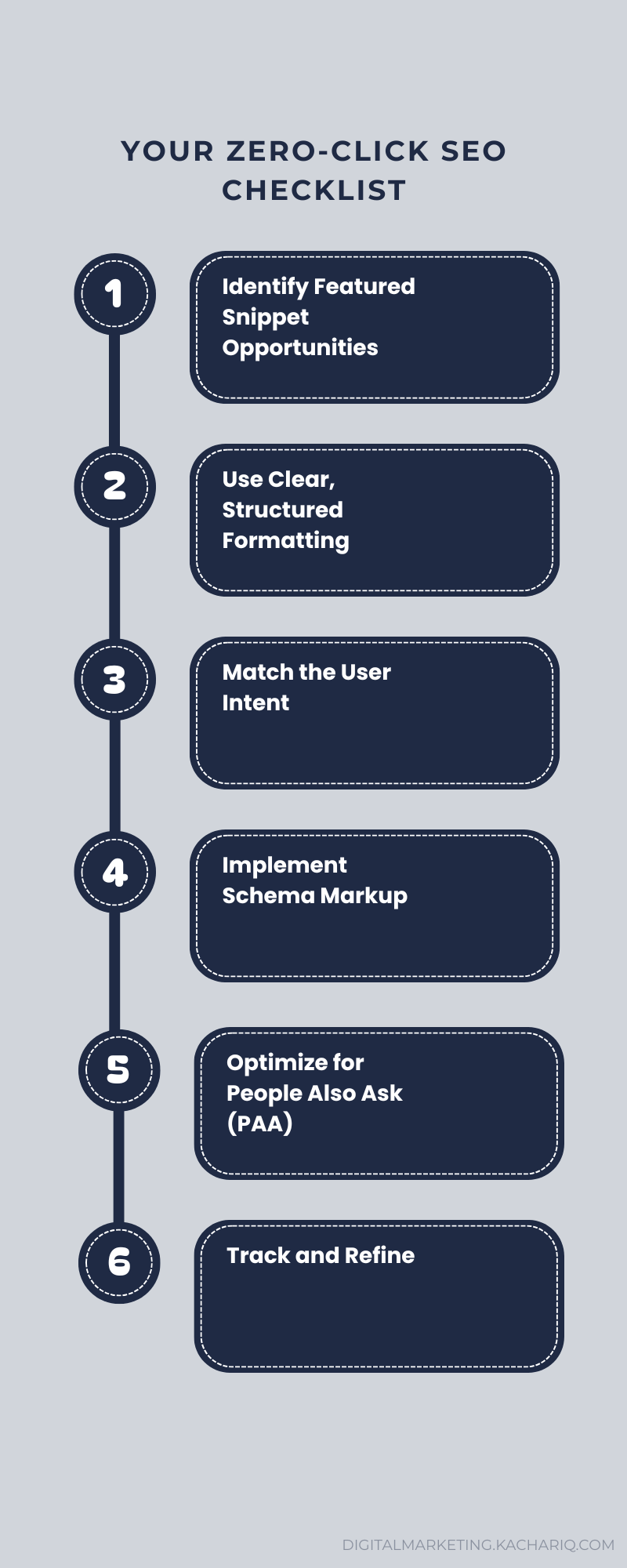
Remember: Optimizing for Featured Snippets in SEO and Rich Results isn’t a one-time trick. It’s an ongoing strategy woven into your content creation and technical SEO fabric. It requires attention to detail, a commitment to quality, and a deep understanding of what users (and Google) truly need.
As search continues to evolve, so should your strategy. To stay ahead, it’s crucial to understand the broader shifts in how search engines interpret intent and deliver results.
👉 Explore the future of optimization in our detailed breakdown of AI SEO, AEO, and GEO strategies — and learn which approach best fits your goals:
AI powered SEO vs. AEO vs. GEO: Choosing the Right Optimization Strategy.

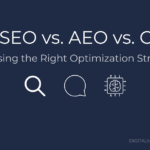
Leave a Reply